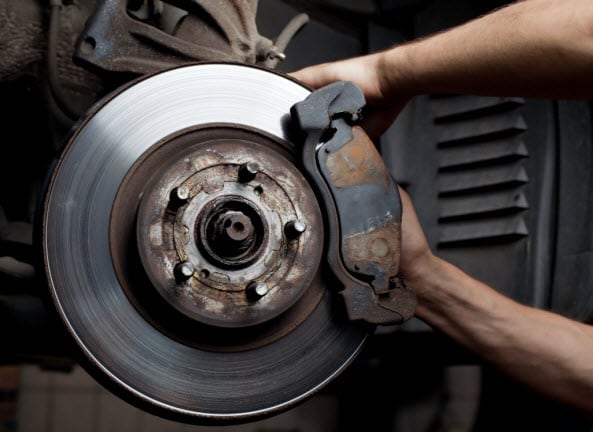
There are some services that aren’t harmful to put off for a while and others that should be paid attention to right away. The ability to safely stop a car is critical, so replacing severely worn brakes in a timely manner is a must. But how does one know when it’s time to do so or if there’s another problem with the brake system? Aside from the high-pitched ringing noise we’re all familiar with, there are other key performance signs and sounds to take notice of.
Right off the bat: Seriously, we highly suggest not letting the brake pads get to 2mm or lower. That is dangerous territory and if the pads completely break down you’re looking at major damage to other brake components, as well as hazardous vehicle performance.
COMMON SIGNS OF BRAKE WEAR
Your car doesn’t come to a stop as quickly as it used to.
This may indicate that your brake pads are thinning or even that there’s a brake fluid leak.
Your brake pedal is extremely sensitive or you have to push it far down.
If the brakes engage with even the gentlest touch of the pedal, you may need a brake fluid exchange or could have uneven wear on your rotors. If the brakes don’t engage until you hit the pedal nearly to the floor, or at a distance that you feel is too far down, your car could possibly have low brake fluid, air in the brake fluid, thinning brake pads or an issue with your car’s hydraulic system.
You hear grinding when you apply your brakes.
At this point you’ve likely completely worn down the brake pads, leading to major rotor damage. Get to a service center as soon as possible.
You feel vibration when braking.
If your vehicle is not out of alignment, this may indicate that your rotors have been warped. Warping of the rotors can occur for several reasons and doesn’t necessarily mean that the brake pads are worn – just that the pads can’t properly grip the rotors.
Your car tends to pull to one side when you’re braking.
This may indicate uneven wearing of the brake pads, a collapsed brake hose or a stuck caliper. Pulling can also indicate problems unrelated to the brake system, so an expert should diagnose the issue.
The brake pads look less than a quarter of an inch thick.
It’s easier to see brakes on some cars compared to others. If you can get a glimpse through your wheel spokes and they look smaller than a quarter of an inch wide, make sure you get to our service center to have an expert replace the pads if needed.